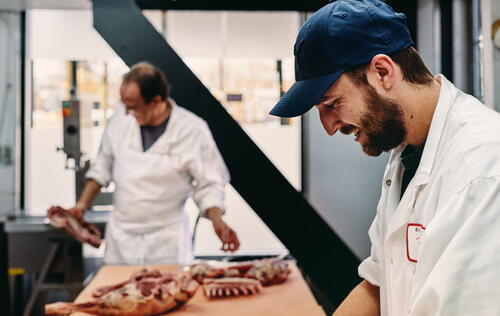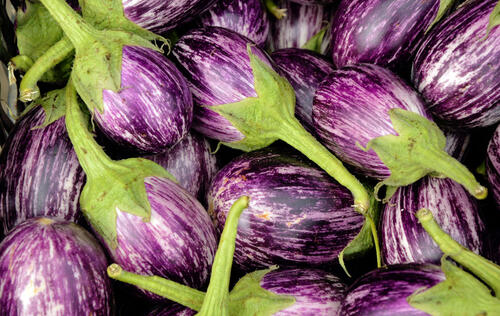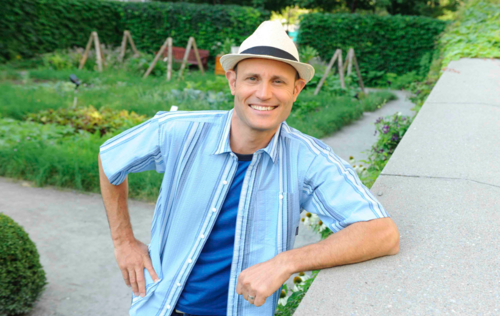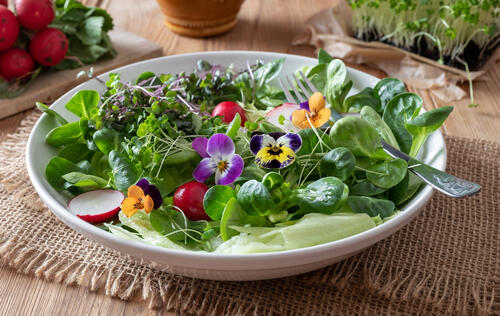Sow and plant your vegetables in spring
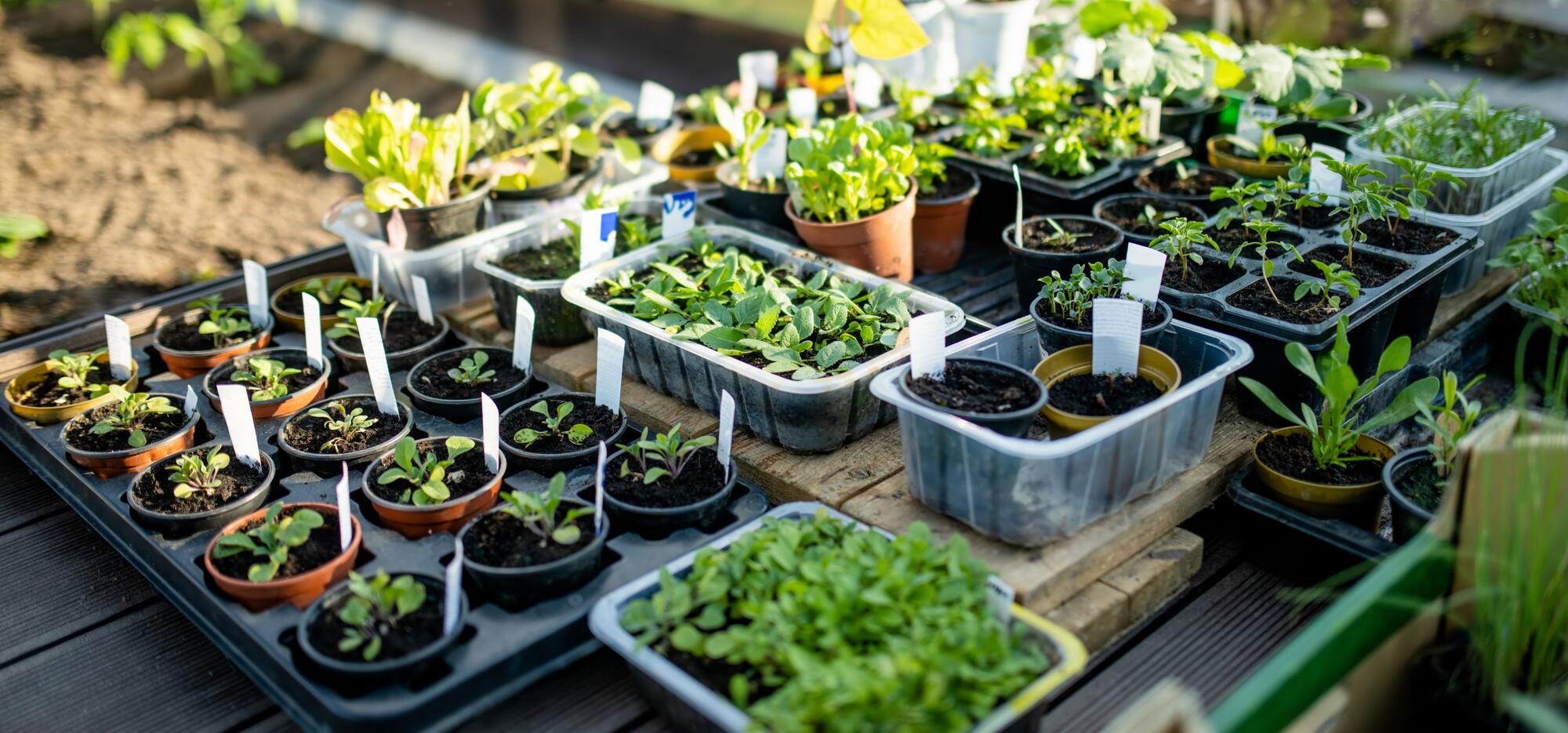
Some people believe it’s necessary to wait until the very end of spring to plant an outdoor vegetable garden. Whatever you do, don’t wait until June to plant vegetables in your garden, since aside from a few tropical plants like tomatoes, most vegetables withstand cool spring weather quite well. Here are the methods to use for sowing, planting and transplanting some of the most popular garden vegetables.
Beets
When to sow : Beets can be planted several weeks before the last spring frost – late April in the greater Montreal area.
Exposure and soil : Beets like full sun and well-drained clay soils with added compost. The seeds should be planted at a depth of about 13 mm (1/2 in.).
Harvest : Beets are usually harvested 60 days after planting, but you can pick the young greens for salads just 15-20 days after germination.
CaRROTS
When to sow : Carrot seeds can be planted in the ground 3-4 weeks before the last frost. In the Montreal area, that means you can plant carrots in late April for an early harvest. By doing a series of two or three staggered plantings – in April, May and June – the harvest will stretch out into the fall.
Exposure and soil : Carrots thrive in full sunlight, but they are also one of the rare garden vegetables that can grow in partial shade. They grow well in light, moist, well-tilled soil with added compost.
Depth : The seeds should be planted at a depth of about 1 cm (a bit less than 1/2 in.). The seeds are tiny, so it’s very difficult to space them out precisely. It’s preferable to buy carrot seeds encased in clay or affixed to a strip of biodegradable paper. You can also try to simply space out the seeds as well as you can, then let the seedlings grow without thinning them out. However, with this method your carrots will come in a variety of sizes.
Harvest : Depending on the cultivar, carrots are usually ready to harvest 50 to 70 days after sowing. Some gardeners try to thin the plants by cutting the tops off the surplus ones with scissors, but studies have shown that cutting or excessive handling of carrot tops tends to attract more carrot flies than usual.
Plus : Covering the carrots with an agrotextile membrane or co-planting them with onions are two effective ways to prevent carrot-fly attacks.
Concombres
When to sow : If you want to grow cucumbers from seed, you’ll have to start them indoors about three weeks before transplanting them outside. Sowing can also be done successfully outdoors after the last frost, when the soil temperature is 15°C or higher.
Depth: In either case, the seeds must be planted slightly deeper than 1 cm (just under 1/2 in.), about 50 cm apart. Don’t forget that the cucumber plant is both a climber and a creeper that requires considerable space. If you prefer to purchase seedlings from a garden centre, choose compact and vigorous ones that are no more than a few weeks old and, most importantly, disease-free. Rather than seedlings sold in Styrofoam flats, opt for ones offered in individual containers at least 10 cm in diameter. This will improve the chances for successful transplanting.
Don’t forget to acclimate your cucumber seedlings to outdoor temperatures before transplanting them. This toughening period needs to start a few days before transplanting. Simply place the seedlings outside, shaded from afternoon sun, for a little longer each day.
Exposure and soil : Whether you grow them in containers or in the ground, cucumbers need plenty of sunlight and heat as well as light, moist, humus-rich soil. In containers, a potting mix based on compost, peat moss and perlite works like a charm. Grow cucumbers in large pots, ideally black ones to help the soil retain warmth. If planting in the ground, be sure to mix plenty of compost into the existing soil – a few shovelfuls per plant. Don’t forget to mix mycorrhiza and fertilizer into the soil when transplanting the seedlings. Add a few handfuls (100 ml per seedling) of a natural granular fertilizer rich in nitrogen and potassium (5-3-8 ratio).
- Pests and diseases : The main difficulty with growing cucumbers is that the plants are often attacked by leaf beetles, a yellow insect with black stripes, with orange-red larvae. Leaf beetles are particularly attracted to cucumbers and will also eat the foliage and flowers of most vegetables in the gourd family (pumpkins, squashes, melons). Unfortunately, not only do the beetles devour plants, they are a vector for blights such as powdery mildew and bacterial ring rot. The insects spread these pathogens everywhere they go, causing cucumber leaves to yellow, wilt and die. To get rid of adults and larvae, you can use a shop-vac or a battery-powered hand-vac. You can also protect your cucumber plants from beetles by covering them with an agrotextile membrane, a translucent "veil" that keeps the insects away without blocking sunlight. To protect against mildew and ring rot, mist the leaves each week, from the start of the season, with a Bacillus subtilis-based bio-fungicide. The microbe is innocuous to humans but capable of destroying several harmful species of mould and bacteria.
Kale
When to sow : Kale is a cabbage cultivar whose curly leaves do not mature into a dense head. Since it is particularly cold-resistant, it can be sowed outdoors as early as mid-April.
Exposure and soil : The seeds must be planted in the ground at a depth of about 13 mm (1/2 in.). You can also transplant kale seedlings that you started indoors.
Depth : Kale has a preference for rich, humid clay soils that get six or more hours of sunlight daily.
LETTUCE
- When to sow : Because lettuce doesn’t fare well in summer heat, it is better to sow it in the ground in late April or early May and harvest it before mid-July.
Exposure and soil : Whether you’re growing it in full sun or partial shade, this leafy green grows well in light, moist soil that’s well-tilled and enhanced with a bit of compost.
BOK CHOY
When to sow : Bok choy is a close Asian cousin of cabbage with white stems and veins. The plant is known for its cold tolerance, meaning it can be grown early in the season, in April and May. Early sowing protects the plant from summer heat, which generally provokes flowering and changes its flavour profile. Asian Delight, Canton and Joi Choi are some varieties that don’t flower as readily when the weather warms up.
Exposure and soil : Bok choy grows well in full sun and light, compost-rich soil that’s moist and well-drained. This is not an easy plant to transplant, so it is recommended that you sow seeds directly in the ground.
Harvest : You’ll have a crop just 45-50 days after sowing.
SNOW PEAS
When to sow : Because they’re highly cold-tolerant, snow peas can be planted in late April in the Montreal area.
Harvest : It is not necessary to wait for pods to form before eating this plant: three to four weeks after sowing, the sprouts are ready to be picked.
Poivrons
When to sow : Whether you’re growing them in containers on a balcony or in the soil in a garden, peppers must be planted outside one to two weeks after the risk of frost has passed, which usually means late May or early June, depending on your location.
Exposure and soil : In the garden, plant them in loose, well-drained, compost-enriched soil, protected from high wind and exposed to full sun. If you prefer containers, it is recommended that you grow pepper plants in a potting mix of compost and peat moss. In that case, choose stocky cultivars that produce small peppers, such as “Lunchbox” or “Mini Bell.” Before planting, cut off the lowest two leaves on each seedling. This will allow you to bury about 10 cm of the plant’s stem. This technique ensures better rooting and promotes the formation of an extensive root system that will more effectively deliver water and nutrients to the plant. Like tomatoes, peppers are particularly voracious consumers of water and nutrients. At planting time, give each seedling three to four handfuls (100 ml) of a natural, slow-release granular fertilizer rich in nitrogen and potassium, with a ratio close to 5-3-8. You can also add a mycorrhiza fungus during planting. It is a good idea to use this product when planting demanding vegetables like eggplants, peppers and tomatoes. It stimulates growth by acting as an extension of the root system, allowing the roots to better supply the plant with water and nutrients. Among other things this leads to more abundant, higher quality flowers and fruits.
POTATOES
When to sow : Unlike most garden vegetables, potatoes are not propagated with seeds. To be able to grow them, you must plant tubers, whether from the supermarket or garden centre. Between 10 and 15 days before planting them outdoors, place the tubers in a sunny spot – on the kitchen counter, for example – to make them sprout. You can plant them in the ground in May, when the dandelions are flowering. This is about 2 to 3 weeks before the final expected frost.
Exposure and soil : Smaller tubers can be planted directly into the ground, but larger ones should be cut into egg-sized pieces with at least one sprout. Don’t forget to dose the cut sides with sulfur before planting.
Depth : The tubers must be planted at a depth of about 10 cm (4 in.), 30 cm (12 in.) apart. Leave a little more than 60 cm (24 in.) between rows. Potatoes love light, deep, rich soil and full sun. Before planting, enrich the soil with compost.
RADISHES
When to sow : Because they tolerate cold particularly well, radishes are among the most suitable vegetables for early planting – right after the spring thaw in April.
Harvest : Because they grow very quickly, you’ll only need to wait about 30 days before you have a crop to harvest.
TOMATOES
When to sow : Unfortunately, once May arrives it’s already too late to grow tomatoes from seed. In that case you’ll have to purchase seedlings from a garden centre. Tomato plants must be planted in very rich, loose, well-drained soil exposed to full sun. The ideal time to transplant tomato seedlings is when the chance of another frost is essentially zero. In the Montreal area and several municipalities in Zone 5, that usually means around the end of May, typically after the 20th. In Quebec City and some other regions in Zone 4, you generally have to wait until the very end of May or early June. Farther north, it is best to transplant your seedlings around mid-June. Don’t forget to acclimate your seedlings to outdoor conditions before planting them. This toughening period needs to start a few days before transplanting. Simply place the seedlings outside, in partial shade, for a little longer each day.
Exposure and soil : If you are planting them in the ground, it’s recommended that you use a 50-50 mixture of existing soil and compost. If you are growing tomatoes in containers, be sure to choose large ones and use a rich potting mix of compost, peat moss and perlite. Whether you’re growing your tomatoes in the ground or in containers, add three or four handfuls of slow-release natural fertilizer, rich in nitrogen and potassium with a ratio close to 5-3-8. The crown of each seedling should be a few centimetres below the existing ground surface. By taking care to cut off the leaves on the main stem, you can even bury them up to the first two nodes. This technique guarantees better rooting and promotes the development of a vast root system that can draw more water and nutrients than otherwise.
Text by Albert Mondor, horticulturist and biologist.
